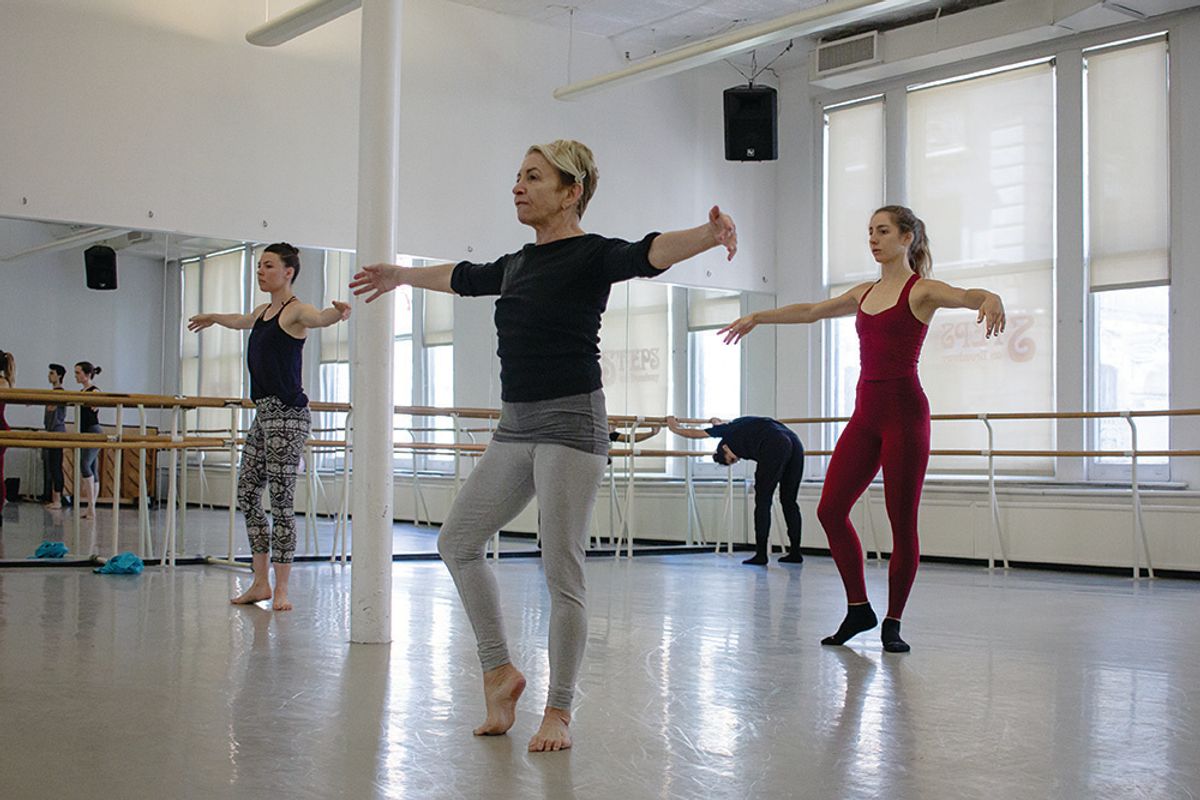
In an adult ballet class, Kimberly Chandler Vaccaro noticed a woman working so hard that her shoulders were near her ears. “I was going to say something about her tension, but I didn’t want her awareness to go there,” says Vaccaro, who teaches at Princeton Ballet School. Instead, she told the dancer to remember that breathing muscles are low, below her sternum. “Then we talked about moving from the shoulder blades first, and how they’re halfway down your back. She started this lovely sequential movement, and it eventually solved the problem.”
Drawing attention to symptoms, such as tense shoulders, might create more issues for a dancer if the cause of the problem remains unaddressed. Simply saying “shoulders down” might compromise alignment as the dancer tries to show a longer neck or forgets to breathe, jeopardizing movement quality. Teachers can be strategic and communicate information in a way that doesn’t aggravate the situation. “Dance will never be easy,” says master teacher Risa Steinberg, “but it can be easier if you’re not folding new problems on top of old ones.”
Develop a Communication Strategy
Marion Tonner, director of Oregon Ballet Theatre School, tackles the most basic corrections first, knowing that many symptoms disappear with a better technical foundation. “I assess the students’ overall work before jumping into fix-it solutions,” she says. Tonner might ask questions about their experiences and challenges before embarking on a plan of corrections. “It’s also important for a teacher to observe how a student interprets a correction to provide proper understanding and application.”
Talking about anatomical alignment might not resonate with all students, for example. Steinberg uses imagery and key phrases as “shortcuts” to avoid too much talking—or time. She will do an initial deep dive into the idea and then use short phrases to address them, moving forward. “If you’re fortunate to have people study with you consistently, you can just give them reminders,” she says. (See sidebar for a list of her favorites.) “When I tell them ‘nostrils on your shoulders,’ it means your shoulders are always breathing outside, not rounding forward.”
Address Common Technical Problems
When students have a swayed back or an anterior tilt of the pelvis, it might indicate a lack of awareness of core muscles. Vaccaro, who is also an associate professor of dance at Rider University, talks to college-age students about the importance of Pilates and basic body architecture, and thoracic (or lateral) breath with the back and ribs widening on the inhale and the abdominals narrowing on the exhale. “Before they begin class, I have them do a lateral breath so their body comes into alignment before they start. They need to feel all those deep muscles, core and glutes, from the beginning, because it’s very difficult to recover in the middle of an exercise. It’s like preemptive medicine.”
Tonner mentions a poking head and rolling ankles as two common symptoms she sees. “A poking head indicates forced turnout or having the weight back,” she says. “Teachers can’t just align the head, because they’re not addressing the root cause.” Similar with rolling ankles, teachers can focus on turning out through the entire leg to address the symptom, and pay careful attention to dancers with tibial torsion. “Take their physicality into account.”
Preempt Behavioral Issues
Teachers can use similar strategies to address behavioral problems in the studio, as well. Young students ages 4 to 6, for example, are easily distracted and might start fidgeting, making classroom management difficult. “They’re just learning when their bodies are moving and not moving,” says Vaccaro. “It’s the beginning of body awareness.” To address this root cause, Vaccaro creates rituals so dancers know what to expect. “I could spend all my time waiting for them to be still, or I could give them a tool that enables them to judge if they are moving or not.”
Vaccaro’s favorite practice for this age involves a lesson about beginnings, middles and ends. She talks about how dancing is like a book, so that students are still, they move and then they’re still again. They jump up to demonstrate their understanding of four opposites, using a rhyme for reference: “Heels together; toes apart. Fingers in and elbows not. Head is up and tail is down. Belly’s in and shoulders out.” Vaccaro says it every week to help them understand first position with arms en bas. “It’s the most adorable thing in the world and encourages their focus, addressing the root of the problem.”




